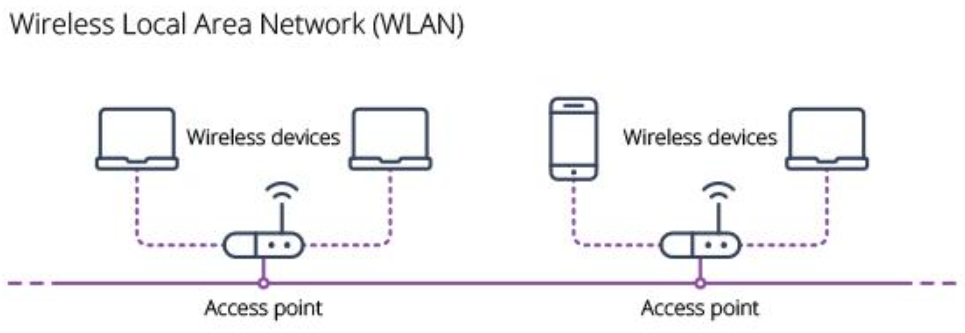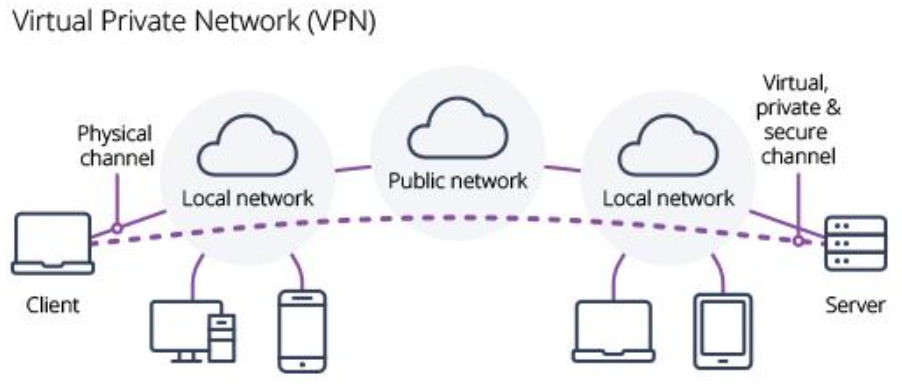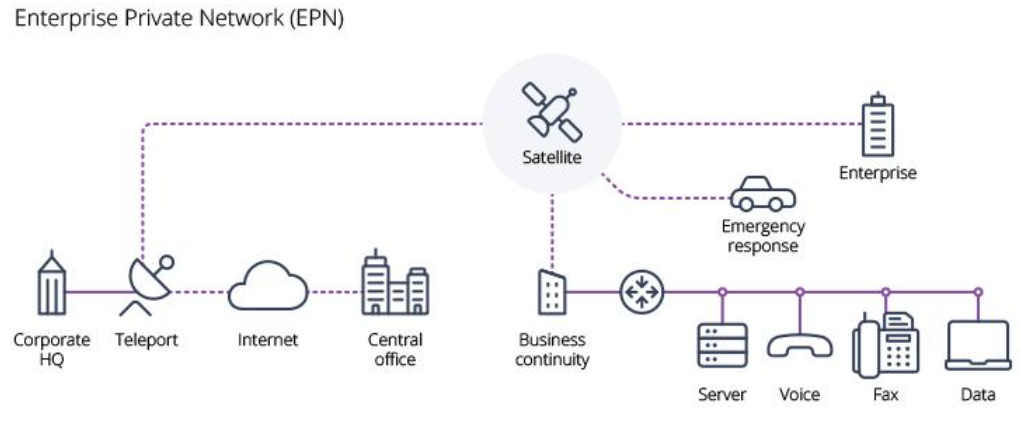There are millions of devices across the world. This skyrocketed number of devices requires high-speed, efficient performance networks to cater to different device requirements. Thus, different types of networks are being introduced to transform the way people connect and transfer information most reliably and efficiently.
With the evolution and advancement in technology, several devices hit the market having different networking needs. Meet those shifting demands have triggered the development of different network topologies. Also, considering the tremendous change in networking, there are chances to encounter the rise of other network types. You must encounter the possible and potential blind spots within your network and leverage available monitoring tools to ensure the security of these networks and the devices available on each network.
What type of network is suitable for which scenario. Before you choose the right network for your organization, you must know what types of networks are available within the market. In this article, we have listed the most commonly used types of computer networks for your consideration and their pros and cons.
If you are a network person, you must have a detailed understanding of different types of networks available in the market, and they differ from each other. We assure you that by the end of this article; you will have the right idea of which network is for what purpose. Let's dive into the details of each network type.
Different Types of Networks
Here, we have explained the working and different cases where you can use each network type, making it easier for you to choose the right network as per your project requirement.
1. Local Area Network (LAN)
A LAN is a computer network for designated users who wants to access the same system connection within a small range. It allows several users to share devices resources (printers) and exchange data while connected to the network. But, you can only share the data if your device is connected to the network-aware OS.
An example of LAN is a laptop or mobile device connected to the home or office network. LAN is commonly used within organizations, institutions, etc. you can even use optical fibre cables or different network topologies to meet your network-related goals. For sharing information between several devices, you can even use Wifi.

When to use a LAN:
- If you want several users to connect within a single location.
- Sharing information across devices within a small geographic area.
When not to use a LAN:
- If you have several devices scattered over wide distances, such as in separate cities.
- If you do not have control over your resources.
Pros:
- Allows resource sharing such as printers, hard disks, etc.
- Efficient communication.
- Improved security, as data is stored at the local location.
Cons:
- High implementation cost.
- It required high maintenance due to hardware and system failures.
- It is a limited range for connecting to other devices.
2. Personal Area Network (PAN)
You can use this network type, especially for peripheral devices. The main goal of these devices is to transfer the data across devices without being connected to the network. You can connect your PAN to the LAN ad other types of networks if one of the devices within your network acts as a gateway. For example, a Bluetooth keyboard connects to the smart TV. It has an intuitive interface, allowing you to browse the internet, view channels, etc.
You can use the PAN as a wired and wireless network. PAN has a connectivity protocol that might not be directly compatible with other protocols. Wireless PAN, also known as WPANs, come with a small connectivity range such as Wifi, BlueTooth, etc. on the other hand, Wired PANs leverage the USB and Thunderbolt.

When to use a PAN:
- When you want to connect devices to peripherals to laptops, cell phones, etc.
- You do not need to connect your devices directly to the internet.
When not to use a PAN:
- Sharing resources among different users.
- For distances more than a few feet.
Pros:
- To connect devices, you do not require extra space or wire.
- You can connect to many devices simultaneously.
- Easy to use and reliable.
- It helps in synchronizing the data among devices.
- Portable.
Cons:
- It comes in a range of 10m and does not support long-distance sharing of information.
- It transfers the data slowly.
- It uses infrared that can interfere with other signals.
3. Wireless Local Area Network (WLAN)
The introduction of wireless devices and networks has boosted many possibilities ranging from mobile portable wireless devices to fixed wireless devices within the network. All the devices connected via WLAN can communicate without being connected physically.
It comes with high-frequency signals, lasers, and infrared beams for initiating communication. It allows people to move around, ensuring flexible data transmission. It helps transfer the data at high speed and is perfect for the 2.4 GHz (for example- Wifi radios) and 5GHz bands. (for example- laptops).

When to use a WLAN:
- It allows people to roam around while connected to the network.
- If you have a device that does not support a wired connection.
- Want to connect devices without any physical connection while maintaining the network infrastructure's specific distance.
When not to use a WLAN:
- If you want consistent network service for your device.
- If you want secured communication and connection over the network.
- Fast data transmission.
Pros:
- These are cost-effective solutions for getting connected to the network.
- Scaling up or scaling down the devices is efficient with WLAN.
- It ensures high mobility.
- You do not have to use wires or any physical connection to get connected.
Cons:
- It has a slow speed as compared to other wireless networks.
- These are complex to set up.
- Wireless connections are more prone to threats.
- It can cover only a small or limited area.
4. Wide Area Network (WAN)
WAN allows several devices to communicate and transfer data within different geographical regions. It is a type of telecommunication network that I not limited to a specific location and allows you to share different forms of media.
You can use WANs network as either primary or hybrid for point-to-point or packet-switched networks. WANs network can be seen and used everywhere, even in your daily life, connecting cities, countries, and even space. It allows several companies, organizations, and institutions to remote access other systems and communicate in real-time.

When to use a WAN:
- You want to communicate with the devices spread across a vast geography.
When not to use a WAN:
- Due to the usage of the leased lines, it incurs costs, not suitable for a limited budget.
- Some WAN technologies can vary in performance, so they might not work in case of the requirement of consistent performance.
Pros:
- It can cover around 1000 km of area, allowing direct communication between devices.
- It allows you to share data irrespective of the network.
- It ensures that every device on the network has updated data simultaneously, irrespective of which device updates the data.
- It offers guaranteed uptime.
Cons:
- As it connects several devices, it becomes more prone to threats.
- Due to significant geographical coverage, it incurs a heavy installation and setup cost.
- Due to poor connectivity, you will face performance issues in some locations.
- It requires more time to troubleshoot the connectivity issues.
5. Metropolitan Area Network (MAN)
With the advancement in technologies, people are expecting high speed and performance. Only some networks are suitable to offer both of these features. But, MAN comes with both features by leveraging the benefits of fibre optics, optical packet switching, etc. It helps make quick data transfers without impacting the performance.
MANs are also referred to as medium-sized networks as they can cover areas larger than LANs but smaller than WANs. a MAN consists of several LANs connected using high-end technologies. MANs can be cable TV networks or even telephone networks, etc.

When to use a MAN:
- When to make direct connect devices spread over regional geography.
- You have the option to provide wired or wireless connectivity between each location.
When not to use a MAN:
- If you have devices scattered over a larger geographic area.
Pros:
- It requires fewer resources as compared to other networks. Thus, it becomes a cost-effective solution for connecting devices.
- It makes email sharing more efficient.
- The use of high-end technologies ensures high speed and performance.
- It allows a faster connection between several LANs.
Cons:
- If the MANs network is extensive, it sometimes becomes challenging to maintain.
- Due to several networks and devices being connected, it is more prone to hackers.
- It requires technical staff to install and maintain MAN networks.
- It uses optic fibre for connection, thus making it a more costly network.
6. Campus Area Network (CAN)
CAN allow the instant connection among various departments of the college's corporate companies to share the data. It combines the network providing access to the information quickly while ensuring security using the proper authentication protocols. It can work almost similarly to the LAN, as they share the same operational approach but have different network sizes. You can access the CAN network using Wifi, hotspots, etc.

When to use a CAN:
- If you want to connect several devices spread over campus for sharing data directly.
- When you can ensure connectivity using wired or wireless solutions between each building.
When not to use a CAN:
- When you have several devices scattered over a larger geographic area rather than the campus.
Pros:
- It ensures high-speed communication between microcontrollers.
- It is a cost-effective network solution as it uses fewer wires t set up the network.
- You can easily find bugs and fix them at the right time.
- It will retransmit the message if it is not delivered in the first place.
- It is suitable to work in different electrical environments.
Cons:
- It can only support up to 64 devices or nodes per network.
- There can be undesirable communication among devices.
- You will remain connected to CAN if you are in 40m of range.
- The cost of installation is high due to the development of specific software.
7. Virtual Private Network (VPN)
Due to the increased cyberattacks, most high-risk companies have moved to private networks ensuring high security to their crucial data being stored on the network. Thus, VPN is the most commonly used network and is gaining high popularity due to its flexibility. It allows the users to connect to the encrypted network to hide the data packets.
VPN ensures it by creating a VPN tunnel between two devices, encapsulating the data. Generally, people use VPNs when they have to use a public network. All your sensitive data, such as IP address and browsing history, get secured with a VPN. The security depends on what type of VPN you have used.

When to use a VPN:
- When you want to establish a secured connection across different locations.
- When you have your resources stored centrally.
When not to use a VPN:
- Due to encryption, you will get an overhead.
Pros:
- It ensures secured communication using a VPN tunnel.
- It ensures the online privacy of your stored data.
- It hides your actual IP by encrypting it.
- It reduces the bandwidth throttling.
- It improves the experience for gamers.
Cons:
- You may get slow internet speed.
- Every device might not support it.
- Sometimes, the VPN connection drops automatically. If you want to avail yourself of premium VPNs, you need to spend money.
8. Enterprise Private Network (EPN)
Some applications take most of the bandwidth, reducing the network's performance and leading to potential bottlenecks in the business. Thus, there is a need for custom-built networks that are individually operated by the specific business to share the company's resources. EN allows the company to be connected to various geographic regions. It optimizes the network by ensuring that the bandwidth-centric applications will run smoothly without interfering with the working of other devices within the network.
EPN provides the freedom to customize the completely private network or can be integrated well with other networks. Tunnelling protocols optimize the EPNs and ensure high-end security across the network.

When to use an EPN:
- When you want to establish secure communication across different locations without being directly connected.
- Share resources among users at different locations.
- When the business has increased network requirements.
When not to use an EPN:
- If you have limited resources, you must not use this network.
- If maintaining redundant links between locations isn't possible.
Pros:
- It ensures maximum security by adopting strict security policies in place.
- As it allows users to access remote data, there is no need to maintain physical infrastructure for every location, saving you many costs.
- It keeps the data centrally, providing updated data across locations.
9. Storage Area Network (SAN)
As the business grows, the network's need for storing and transmitting data increases. Organizations that want their business to scale accordingly look for an optimized way to access and store data. Also, sometimes backing up the essential data becomes a necessity. SAN came up with all possible facilities to ensure all these changing business requirements.
SANs are well-known for their block-level I/O services. The main goal of these networks is to provide high-speed access to any website online. You can even transfer data between several storage devices quickly.

When to use a SAN:
- When you have several devices sharing resources.
- When you have centralized storage for devices across all locations.
When not to use a SAN:
- When you have a limited budget.
- With limited resources, you might face challenges while scaling up your business.
Pros:
- As it works on optic fibre technology, it ensures high-speed performance., such as 5Gbps.
- It ensures complete data security by placing proper measures in place.
- SAN comes with in-built redundancy for continuous working.
- It is highly scalable, as it can accommodate up to 1000 drives.
Cons:
- Installing and maintaining SAN networks are costly.
- It uses a large number of servers that require maintenance costs.
- The effect of SAN is a long-term process.
Factors to choosing the correct network type
As we have described, several types of networks are available. Choosing from the comprehensive list is challenging, and understanding the specific services. Also, it allows your business to scale. But it would be best if you chose the correct network type that can accommodate all your network needs while ensuring high security and performance.
But, all these factors depend on your network requirements. Before going for a specific network type, consider the following factors.
- Understand your business requirement and purpose. Then go through the list of networks meeting all your requirements. Some can be configured as per your specific requirement. You can decide what network will be suitable for your business growth.
- Installing and maintaining an extensive network can be costly and put a hole in your pocket. But if you have a comprehensive budget, you can go for a network offering high-end services such as security, high performance, more extensive areas, privacy, etc. Also, it would be best if you understand your budget constraints earlier.
- Ensure the chosen network ensures consistent availability to stay connected irrespective of the range, several users, etc. They will not be impacted during the system upgrade, change of software, etc.
- Some business tends to grow with time, but their need for a network also grows. They provide scalable bandwidth to accommodate several devices simultaneously, better speed, etc. Make sure that your network can fulfil your scale; ability requirements.
Conclusion
The network has become a consistent and important need for almost every business. No business can grow without having the right network. Today, offices are not limited to hundreds of systems, but it has extended to thousands of systems across the globe, requiring a connection. Different types of networks fulfil different business needs. You can avail of any network, install it and use it per your requirement. Networks are handling small to significant business needs.
We have listed some of the commonly used network types you can consider for your business. Each has different features, range, cost, quality, speed, and performance. So choose the right network and stay connected.
People also read:







